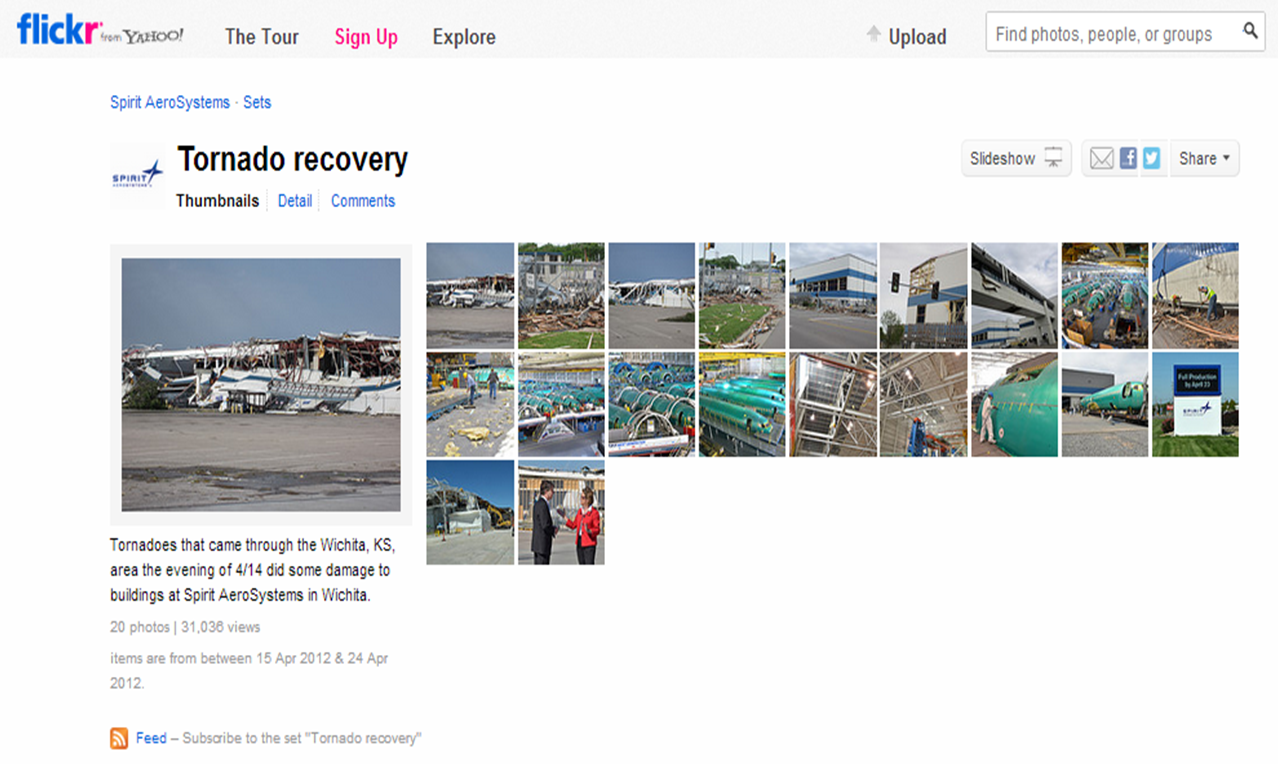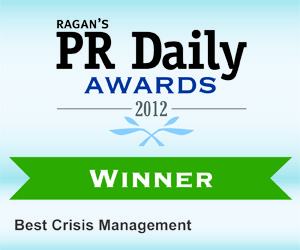Spirit AeroSystems weathers a storm and lands on its feet
In the aftermath of a devastating tornado, the aviation company had to get creative to stay connected. PR Daily’s 2012 Digital PR and Social Media Awards were presented by Synaptic Digital. Learn more about Synaptic Digital here (pdf).

When crises emerge, they hit the communications team hard.
It’s never easy, whether you’re an airline dealing with a celebrity tantrum or a car manufacturer announcing a recall.
But it’s hard to top the crisis that hit Spirit AeroSystems, a Wichita, Kan., company that took a direct hit from a tornado on April 14, 2012.
The tornado damaged dozens of buildings and cut off electricity, backup power, gas, water, pressured air, and sewage treatment, Spirit AeroSystems reports. Roof damage totaled 10,000 square feet, exposing equipment and product to outdoor elements. The company lost email, landline phone service, corporate intranet, and the company’s public website, blacking the primary tools relied upon for emergency communication to employees and external audiences. Operations came to a halt.
So how did Spirit respond?
The company found ways to communicate critical information to investors, its 11,000 employees, the media, and the community without access to many of its primary communication tools.
It used Twitter, Flickr, YouTube, and other social media both to convey the damage and to mitigate a drop in stock value. Twitter pushed out messages to employees and the media. The more visual social media not only conveyed the extent of the damage, but documented that the vast majority of capital assets, production capability, and inventory were untouched, Spirit AeroSystems reports. The company also used Google Docs to convey information.
Nearly 11,000 employees returned to work in an organized fashion just one week after the tornado hit. Absenteeism was not a factor because employees had received comprehensive return-to-work messages through the social and traditional media channels—a noticeable shift in the way messages were normally delivered.
The result? The company’s stock price closed down just 1 percent five days following the disaster, it reported. Shareholders and Wall Street analysts maintained overall confidence in the value of the company through a natural disaster in part because of the aggressive information campaign.
Spirit’s largest customers publicly praised the company for its rapid recovery plan and execution, reinforcing the company’s brand strength. The state’s largest newspaper and local news stations complimented Spirit’s PR campaign. The Spirit team also received several positive tweets from employees and members of the community about how well the company handled the recovery response.
And get this: They got a TV news director to write a recommendation.
“Spirit’s approach was a drastic difference from another aviation company hit by the same storm, which directed media to call a spokesperson out of state,” said the news director of KWCH. “Our newsroom received questions from the public, asking why we weren’t reporting more about that company while we had so much coverage of Spirit.
“We’ve seen time and time again how public perception of a company is steered by the way it responds to the media. Simply getting out in front of the situation can turn a negative situation into something the company can take credit for. The Spirit communications staff demonstrated to us they understand that, with their quick, proactive response.”
Congratulations to Spirit AeroSystems for weathering the storm so adeptly, and for taking top honors in the Best Crisis Management category in PR Daily’s Digital PR & Social Media Awards.
Want to get recognized for your hard work? Find out about Ragan and PR Daily’s award programs here: https://www.prdaily.com/Main/RaganAwardsPrograms.aspx
View More Digital PR Social Media Awards 2012 Winners.
Visit Ragan.com/Awards to learn more about awards opportunities.


